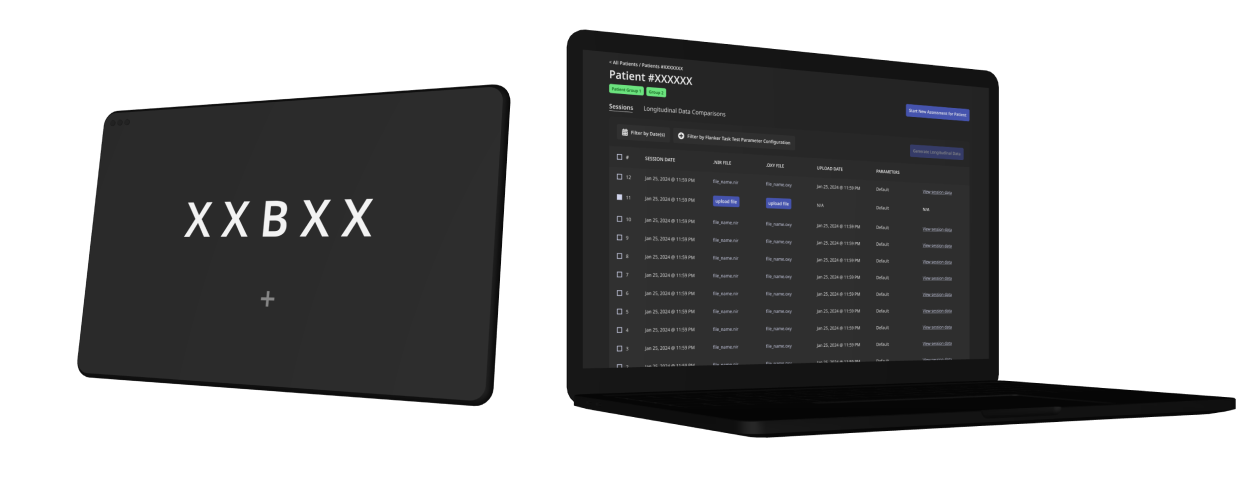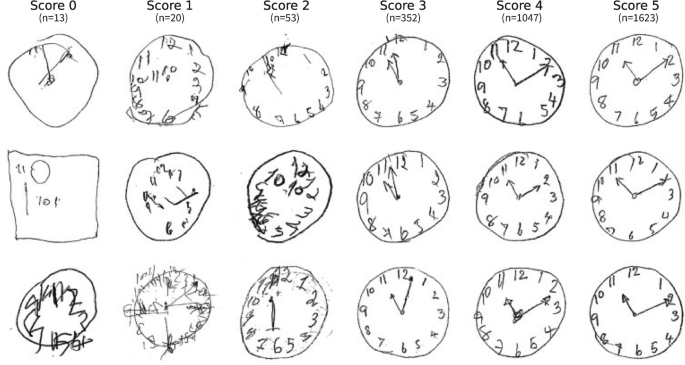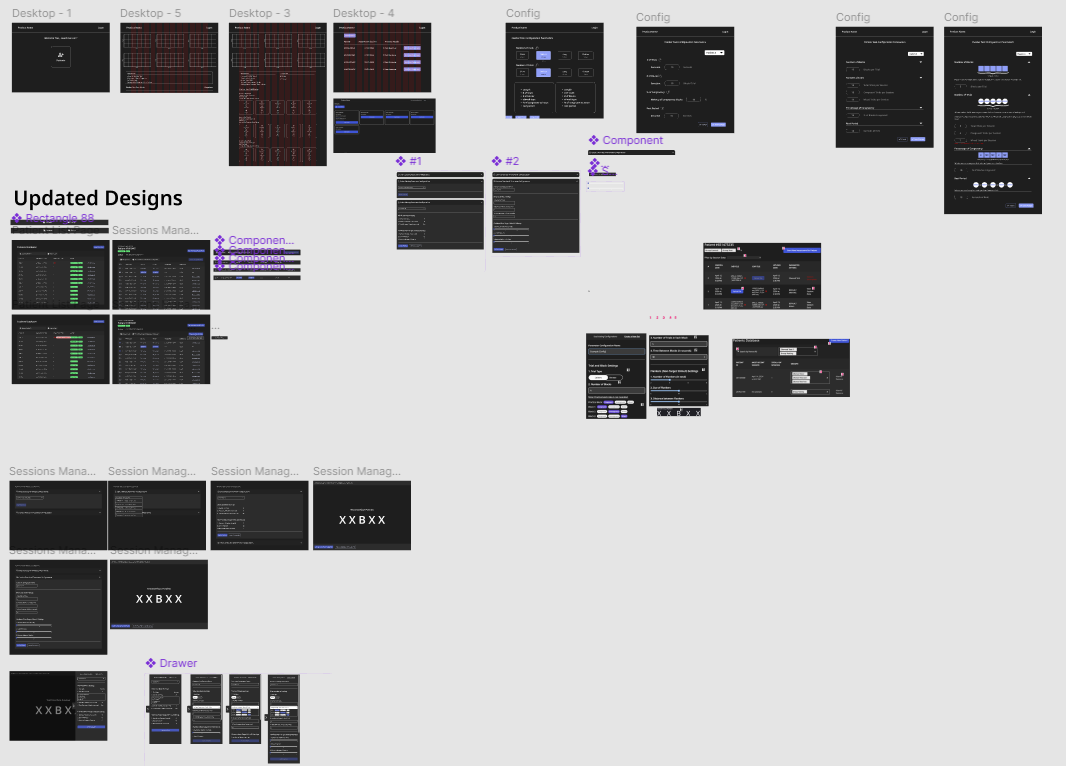Synapsync - integrating cognitive assessments with neuro-imaging tools in real time
At a glace
Context
Nuero-digenerative diseases are becoming more prevelant as the global population ages. This capstone project aims to introduce more objective measures to assist medical professionals for detection and prevention of these types of diseases and disorders.
Problem statement
How might we create a robust and easy to use system that allows medical professionals the ability to assess physiological and psychological health synchronously?
Value proposition
Creating a system that can help medical professionals better understand and analyze cognitive disorders will lead to healthier and longer lives in society.
Team
- 5 classmates (including me)
Functions
- Accessibility
- Visual Design
- Mockups and Prototyping
- Frontend Development
Expected impacts
- further research and development in the neuroscience space
- establish a database for any correlations between physiological and psychological health
- promote a more proactive apporach to cognitive disorder care

Background and Preparation
Neuroscience is hard, who would've thought?
To begin our capstone, we performed research about neuroimaging tools and cognitive assessments so we could get a basic understanding about the current state of the medical field in these areas. The consensus was that cognitive disorder diagnosis is usually subjective and hard to identify until symptoms become quite severe. The image below shows a clock test, which is a test that can be used to help identify these disorders.

This brought up questions like:
"How can this be standardized?"
"What about individuals with fine motor issues?"
"Who decides what a pass is, or how to differentiate between fails?"
Thus, our initial plan was to create a product that would implement task-based neuroimaging to help provide more data to medical professionals. This concept had been done in research settings, but was often expensive and time consuming, meaning it was not yet practical for clinical use. This would combine the use of these cognitive assessments while also having objective metrics from a neuro-imaging tool. Obviously, no one on the team had enough medical expertise to decide the specifics on what we should implement, so the next step was to ask the experts for their opinions.
User Research Interviews
Learning about current trends and practices from the experts
Luckily for the team, we were able to collaborate with one of the professors in the health fauclty, who happened to have expertise with cognitive assessments and neuro-imaging tools, specifially fNIRs, or functional near-infrared spectroscopy. After our preliminary research, we reached out to other medical professionals to learn more and to gain insights about their current wants and needs, and what would be beneficial in their eyes with our initial idea. The team spoke to a combination of psychologists, medical researchers, and hospital staff about our proposed idea.
Key Insights
Hesitation to rely on automated technology - since our product would involve automating signals processing to ensure timely results for medical professionals, our users noted the importance of knowing exactly what would be going on so they could feel confident using it
The human aspect - human connection and discretion is exetremely important in medicine, it was important for users to be able to still interact with their patients as they could pick up nauances that a machine may miss
Legality - making diagnoses in Canada is actually a protected act, therefore our product would need to stray away from mentioning anything about diagnosis, we wanted to focus on the aspect of just providing medical professionals more information to inform their decision making
Time and accuracy - we had many concerns about the time it would take to complete the process, as well as the accuracy of data obtained, we wanted to create a product that would eventually be usable in a reasonable duration for a medical appointment (30-60 minutes)
With all these insights noted, we scoped our project and decided to focus on 1 cognitve assessment, the flanker task, and 1 neuro-imaging tool, the fNIR. Below are some (very) brief descriptions of these methods if you are interested.
Flanker Task
A cognitive assessment that gets participants to identify a character in a series of other characters. Sometimes the character is congruent to the other characters, and sometimes it is incongruent. The idea is that the incongruent patterns will require more thinking, and thus active the brain more.
fNIRs
A neuro-imaging device that uses light to detect blood oxygenation in the brain. The idea is that if your brain is more active, it'll use more oxygen, and the machine will detect these changes as the light bounces off your blood vessels.
Prototyping, Development and Synchronization
Making (Figma) frames, scanning brains and creating domains
To design our software, we used a load of different technologies, the list includes Figma, Node.js, Supabase, and MATLAB to name a few, which is basically a long way of saying that synchornizing everything was a challenge to say the least. Each member of the team had their respective specialties, but we made sure to keep everyone in the loop so we could confidently bring everything together at the end.
Our final web app consisted of 3 main parts: the flanker task, the management system for users, and the signals processing for the fNIR data. Thankfully, I did not have to deal with any of the signals processing work needed to read the raw data from the fNIR. I was responsible for aiding with the front-end designs, as well as the front-end code with respective to the visual styling of all the elements.

As noted by our users, we aimed to create a web app that was not only robust and easy to use, but also allowed medical practitioners the ability to customize the tasks to their liking. This includes an entire configuration panel, as well as a data visualization tab that allows them to filter out different signals, and identify any correlations between a participants cognitive assessment behaviour and their brain oxygenation levels.
Disclaimer: This project has the possibility of continuing, so out of safety I've left out some of the designs, as well as the code.
Learnings and Reflection
Working in an area out of your league
The biggest challenge of this project was definitely working to create a product for such a specialized and knowledgable group of individuals. We were lucky to have many resources throughout our process so we would know if something veered off track, or if something did not make sense in a medical context that we were just not aware of at the time. This saved the team a bunch of time and resources, and allowed us to be more confident making decisions and implementing features.
Another personal challenge I faced was working more with the front-end in this project in comparison to my other projects. I wanted to learn more about the development process for the front-end data display, so I worked with my team members who were more experienced with coding to learn about best practices, and eventually helped implement a light/dark mode for different elements to improve the accessibility of the product. It was nice to fully flesh out my designs and see the code that was used to go from Figma to the web. It gave me a more comprenhensive view on component design and a look into a developer's mind on how elements in Figma should be laid out to make their lives as easy as possible.